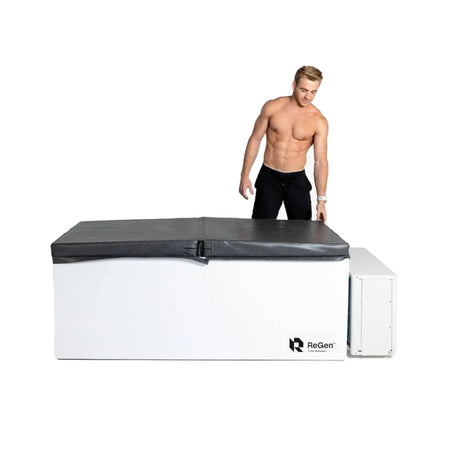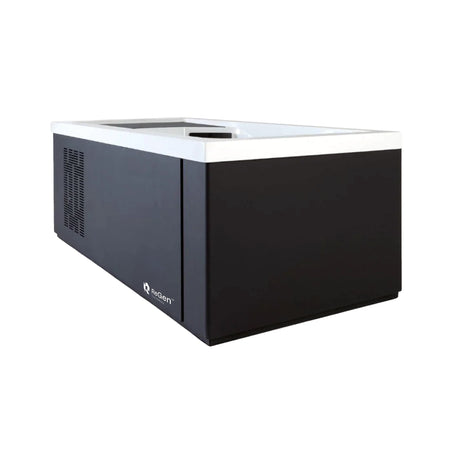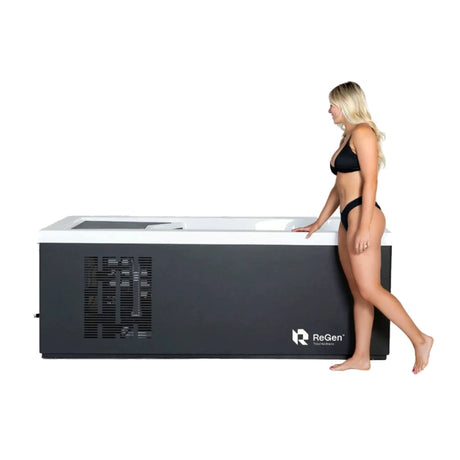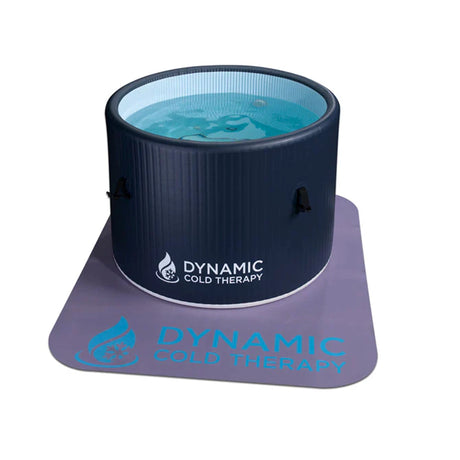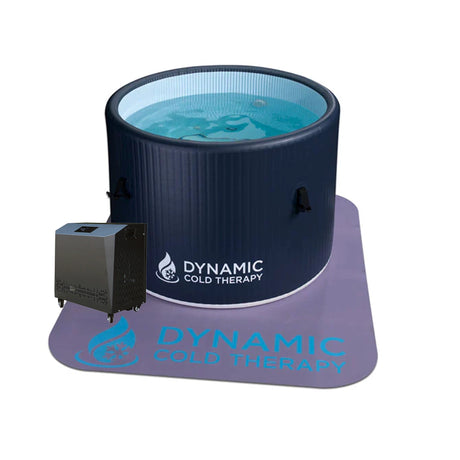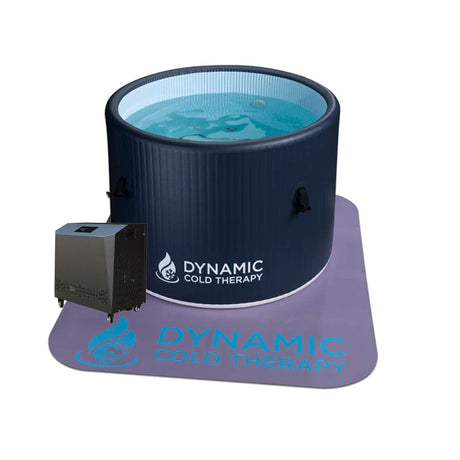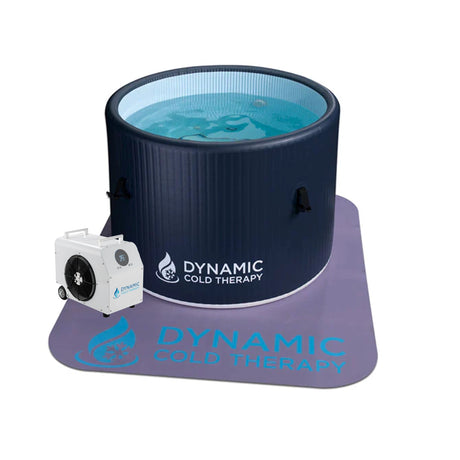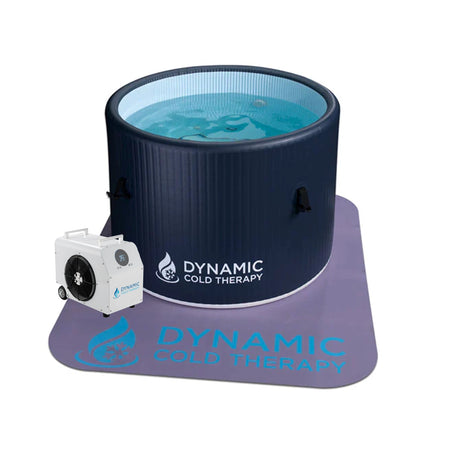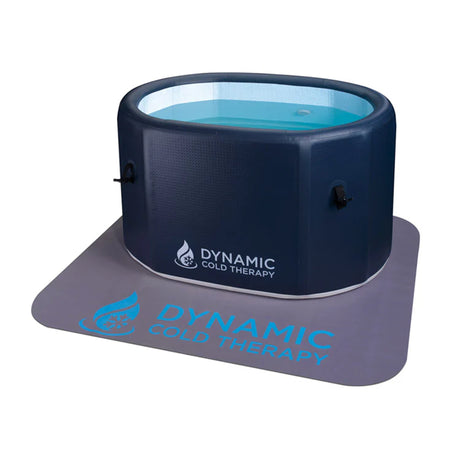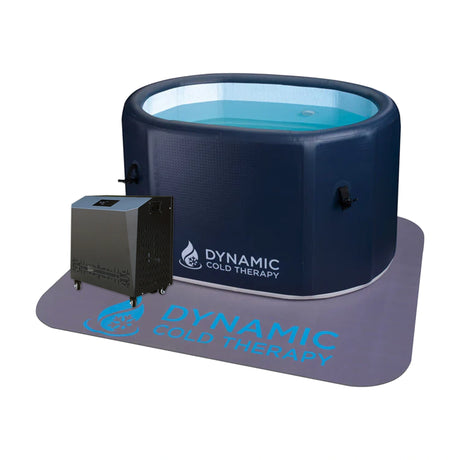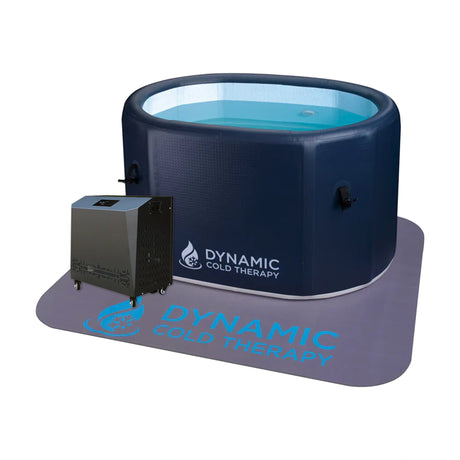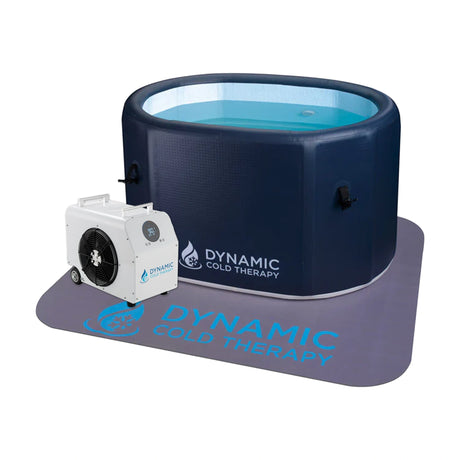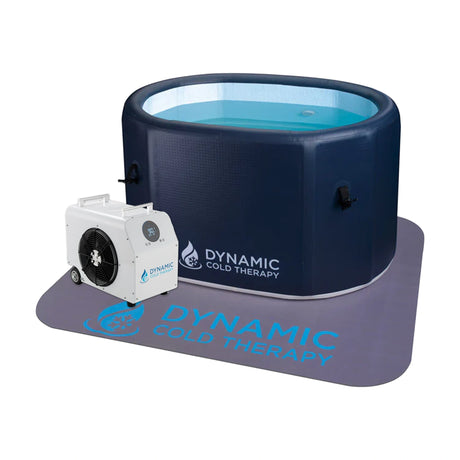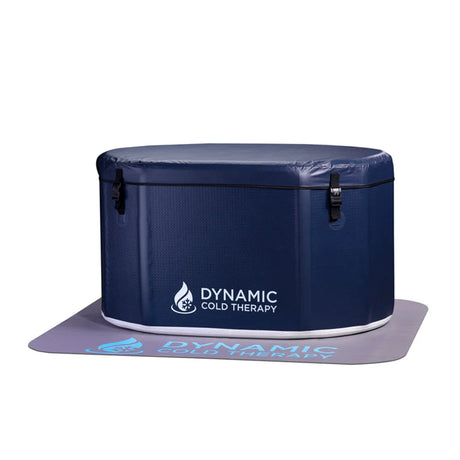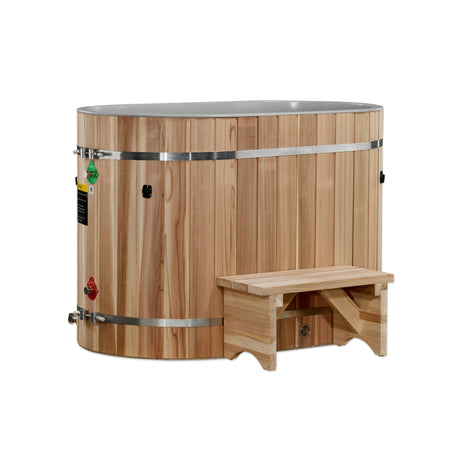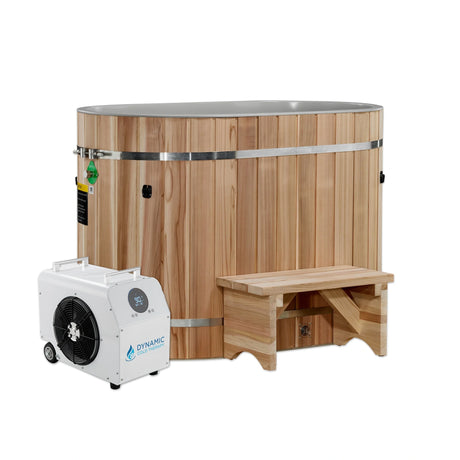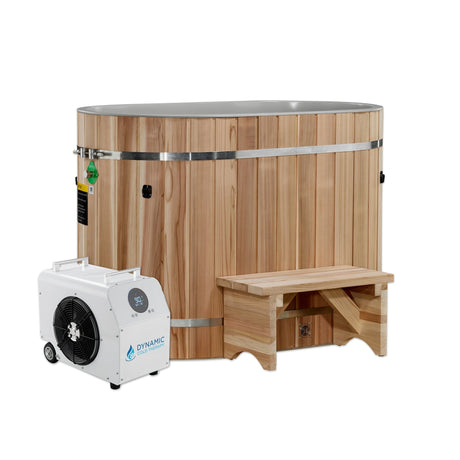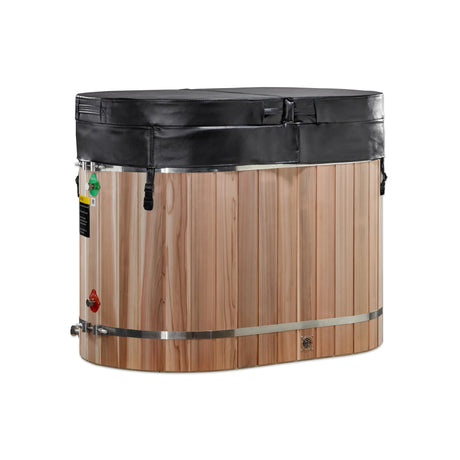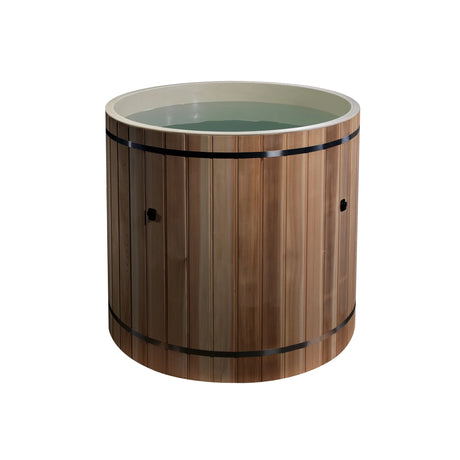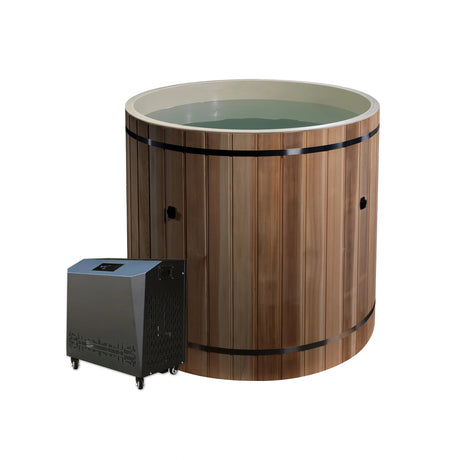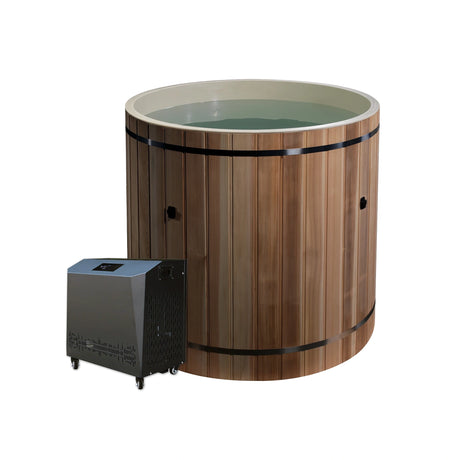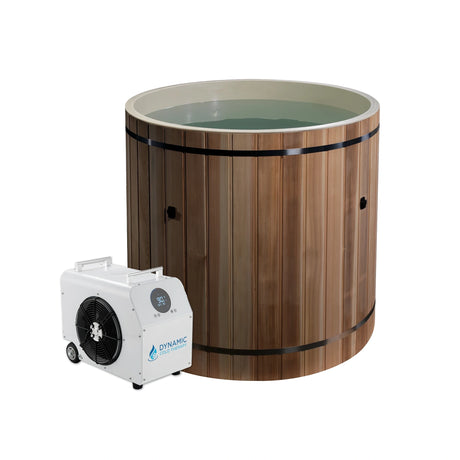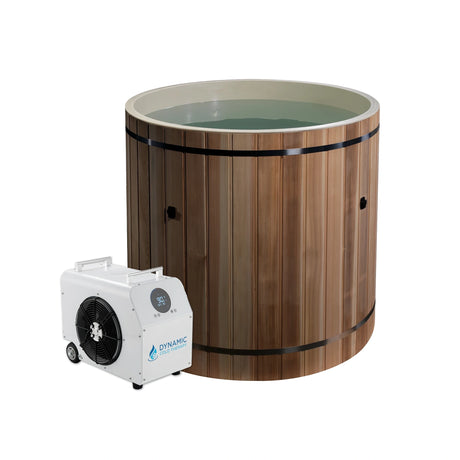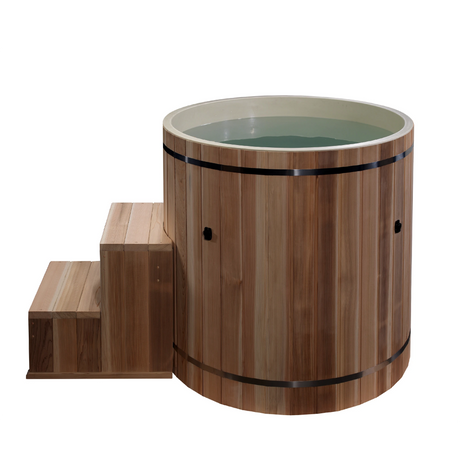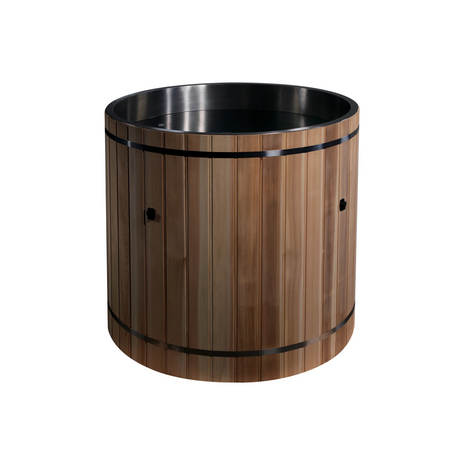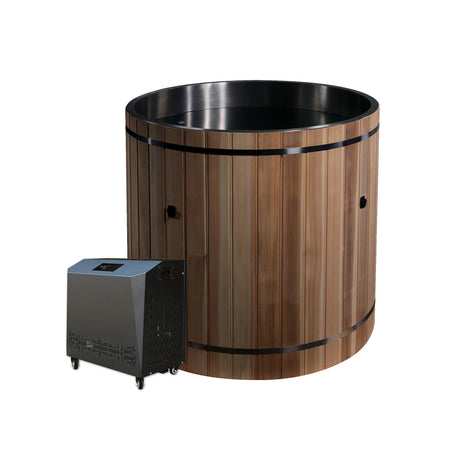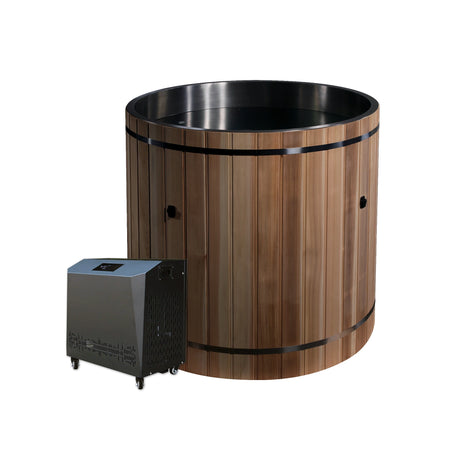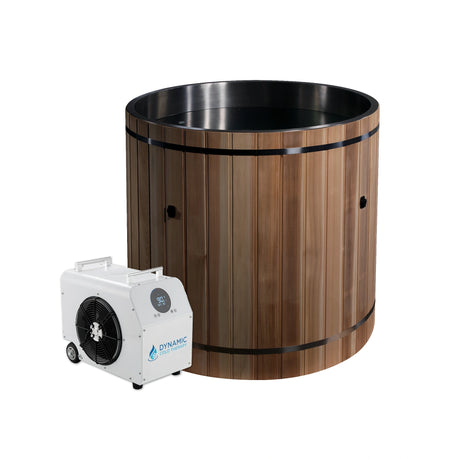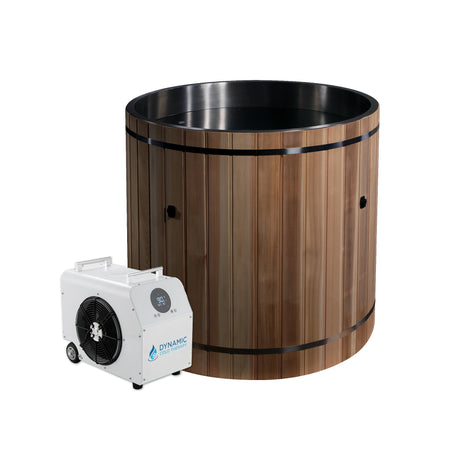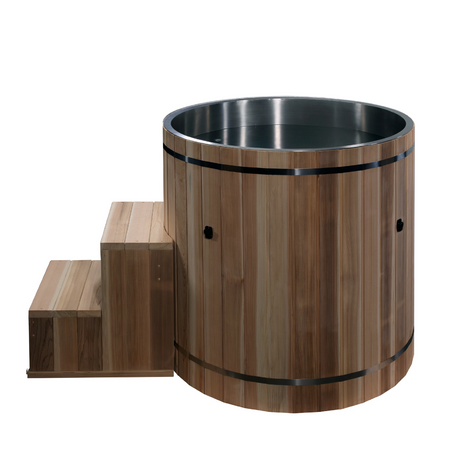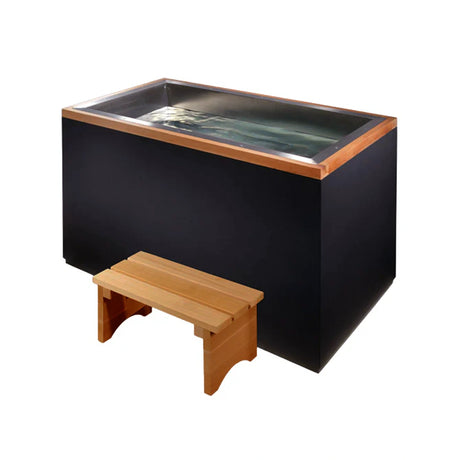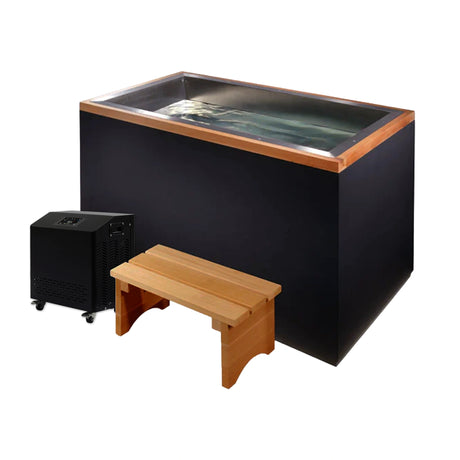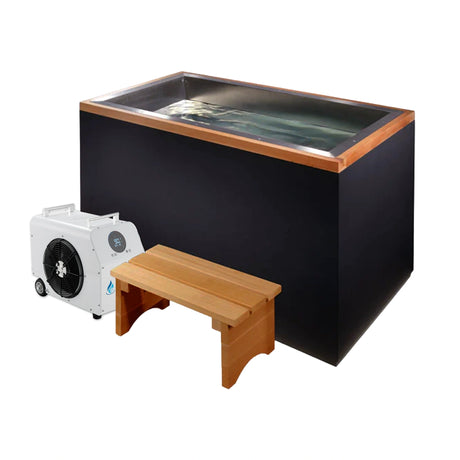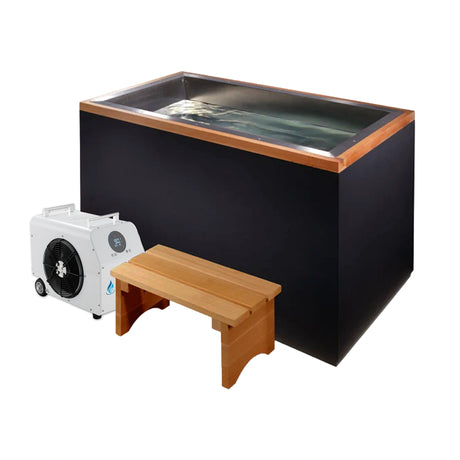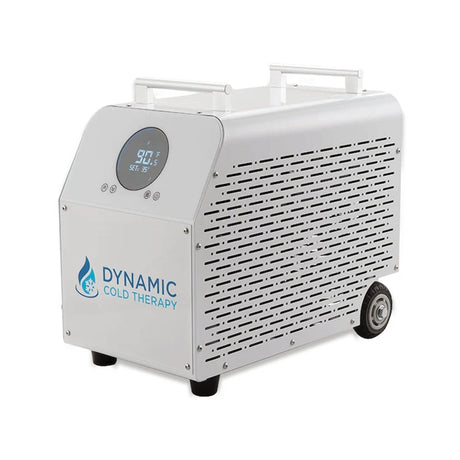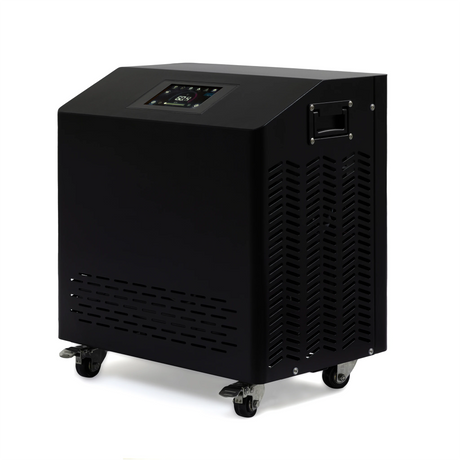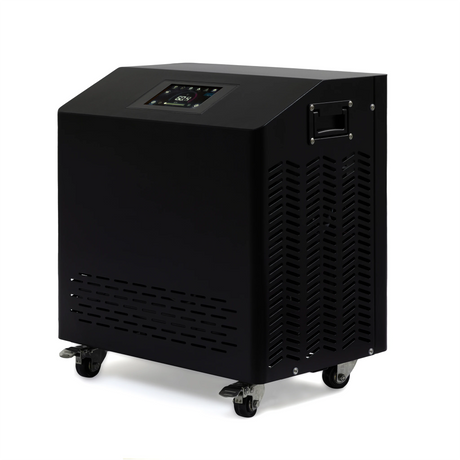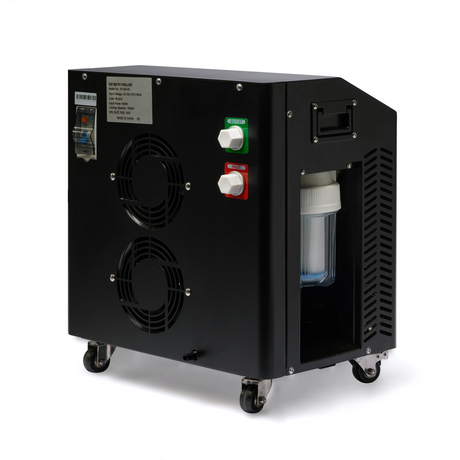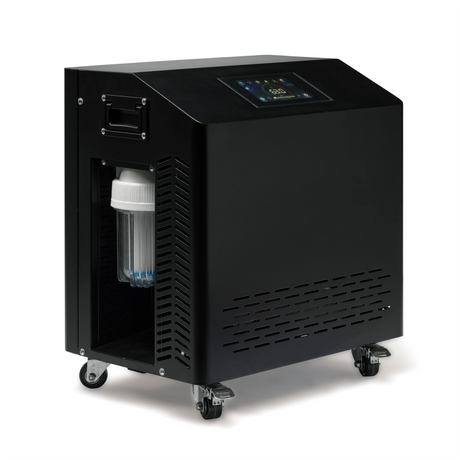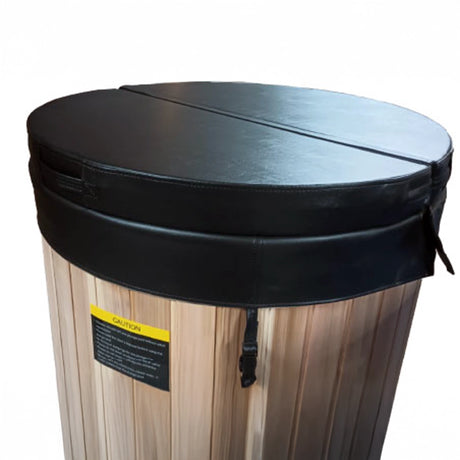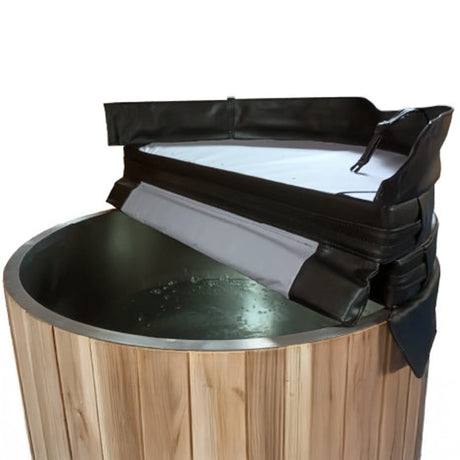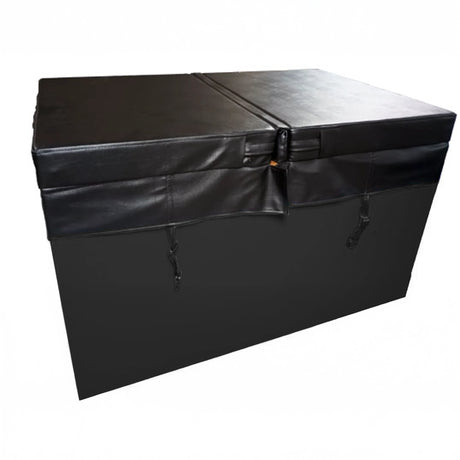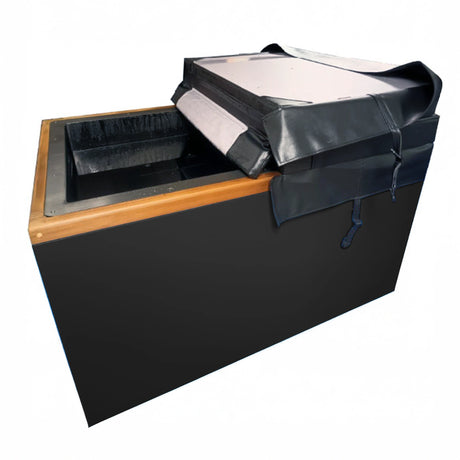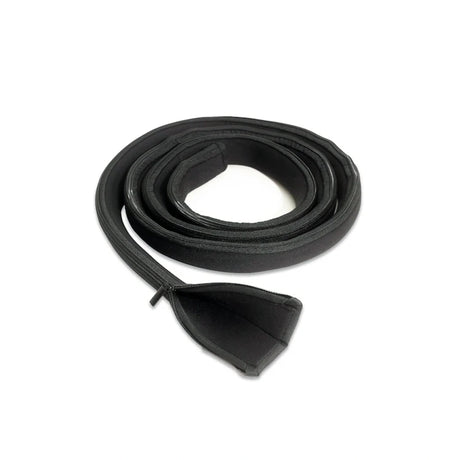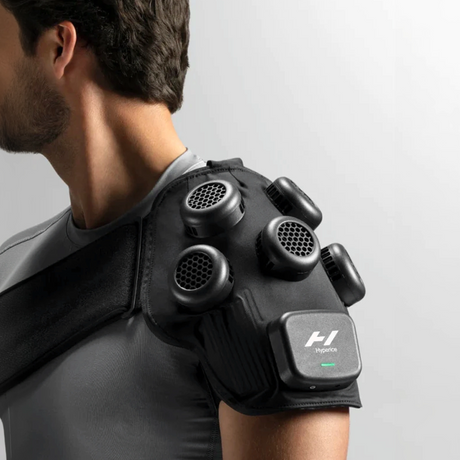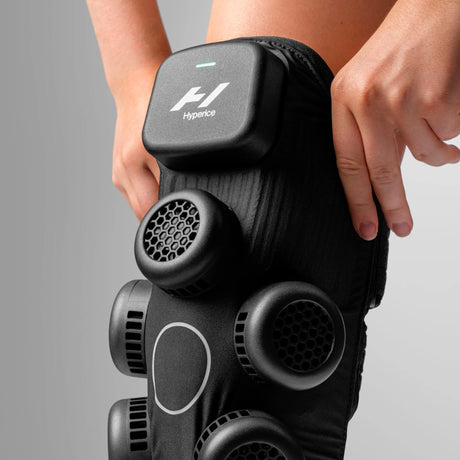Ice baths, cold plunges, or really dang cold tubs of water as some people call them—were once just the secret weapon of elite athletes. Today however, they are exploding in popularity among fitness enthusiasts and wellness seekers worldwide. But this isn’t just another passing trend. The practice of cold water immersion (CWI), where you submerge your body in ice-cold water for a short time, is backed by centuries of history and a growing body of current day scientific research. People everywhere are turning to ice baths not just to recover faster after workouts or cool down on a hot summers day, but to supercharge their mental clarity, reduce stress, help with depression and anxiety, and even optimize their sleep.
Here’s the catch, though: while the benefits are undeniable, most people either avoid ice baths completely or dive in without fully understanding why they work—or how to do them safely. And that’s where things get risky.
So, how does sitting in freezing water actually help your body and mind? Does the temperature matter? What about the length of time you should stay immersed? Whether you’re curious, skeptical, or ready to jump in, this guide will unravel the science behind ice baths, reveal their major benefits, and share expert tips to ensure your experience is safe and effective. Read on, and share your ice bath experience with us in the comments below.
What Are Ice Baths and Why Are They Trending?
Let’s start with the basics. An ice bath, sometimes referred to as cold water immersion (CWI), a cold plunge tub, etc., is exactly what it sounds like: submerging your body in a tub or pool filled with ice-cold water. The benefits associated with doing this call for the water to be anywhere around 50°F to 59°F (10°C to 15°C), though some hardcore enthusiasts are very vocal about more benefits with less temperature. Which is why these folks will go as low as 36°F (2°C). While this might sound like torture to the uninitiated, this practice has actually been around for centuries, dating all the way back to ancient Greece when it was used to accelerate healing and promote vitality.
But why has an ancient technique suddenly become the darling of athletes, wellness gurus, and biohackers across the globe? The answer lies in its wide-ranging health benefits, as revealed by modern scientific studies. From reducing muscle soreness to boosting mental clarity and even improving your sleep, ice baths are much more than a recovery fad—they're a modern-day wellness powerhouse.

Ice Bath: What Does It Do to Your Body?
The magic of an ice bath begins the moment your body comes into contact with freezing water. The cold triggers a cascade of physiological effects designed to protect and heal the body:
- Vasoconstriction: Your blood vessels constrict, directing blood flow away from the extremities and toward vital organs, ensuring they remain warm and functional.
- Reduced inflammation: The cold water has an anti-inflammatory effect, decreasing swelling in your muscles and joints, which is especially helpful after intense workouts.
- Pain relief: Cold temperatures slow nerve conduction, which can reduce pain signals traveling to your brain.
- Metabolic activation: Your body works overtime to maintain its core temperature in the cold, which can result in an increase in calorie burning via the burning of brown fat (brown adipose tissue or BAT for short).
The Most Impressive Ice Bath Benefits
For such a simple ritual, ice baths pack a surprisingly powerful punch. Let’s dive into the most compelling benefits:
1. Enhanced Muscle Recovery
If you’ve ever found yourself unable to climb stairs the day after leg day, you might want to consider an ice bath. By reducing post-workout inflammation and flushing out metabolic waste, cold water immersion can significantly speed up recovery, leaving you primed for your next session (Gym Shark)
2. Improved Mental Clarity and Mood
Apart from its physical rewards, cold exposure can also work wonders for your mental health. Studies have shown that cold water immersion can decrease stress, relieve symptoms of depression, and boost feelings of focus and euphoria. It’s no surprise that some of the world’s top performers swear by their morning ice plunges to start the day with a mental edge.
3. Boosted Circulation
The dramatic shift between cold constriction and warm blood flow after exiting the bath stimulates the circulatory system, improving overall blood flow and promoting cardiovascular health. Although the cold feels freezing, the sensation you get when emerging from the bath once the blood starts flowing is hard to replicate any other way.
4. Elevated Immune Function
While research is ongoing, there’s evidence suggesting that cold exposure might actually strengthen the immune system. Regular ice baths could help train your body to adapt to stress, potentially boosting its resilience to illnesses (Les Mills).
5. Better Sleep Quality
Finally, cold water therapy may be your ticket to deeper, more restful sleep. By calming the nervous system and lowering core temperature, ice baths help signal your body that it’s time to relax and recover—the perfect prelude to a good night’s rest.
How Long to Stay in an Ice Bath?
Now that you’re sold on the benefits, let’s address a crucial question: how long to stay in an ice bath? The answer is surprisingly straightforward but varies based on your experience level:
- Beginners: Start with 30 seconds to 2 minutes to give your body time to adjust to the shock of the cold.
- Intermediate to Advanced: Gradually work your way up to 5–10 minutes, depending on your tolerance and goals (Prevention).
Unless your name is Wim Hof, Never stay in an ice bath for more than 15 minutes to avoid risks like hypothermia or frostbite. Always listen to your body and get out if you feel uncomfortable or unsafe.

Finding the Proper Temperature for Ice Baths
The proper temperature for ice baths plays a pivotal role in maximizing benefits while minimizing risks. Experts recommend a temperature range of 50°F to 59°F (10°C to 15°C) for most people. However:
- Beginners: Start at the upper range (59°F or 15°C) to ease into the practice.
- Advanced practitioners: Experiment with colder temperatures, but be mindful of your limits and always prioritize safety. Once you get used to it (if you ever get used to it) feel free to drop the temp to whatever your cold plunge model can handle.
How to Safely Enjoy the Ice Bath Experience
Cold water immersion offers incredible benefits, but it’s not without risks if done improperly. Follow these safety tips for a safe and enjoyable experience:
- Consult a healthcare provider, especially if you have any medical conditions.
- Ease in gradually instead of jumping straight in. Let your body adjust to the cold.
- Practice controlled breathing to manage the shock of icy water.
- Always have someone nearby, especially if you’re new to ice baths.
- Rewarm slowly after your bath to avoid rapid temperature shifts.
- Stay hydrated before and after to support your circulatory system.
Frequently Asked Questions About Ice Baths
1. What is the ideal temperature for an ice bath?
The ideal temperature for an ice bath ranges between 50°F and 59°F (10°C to 15°C). Beginners should start at the warmer end of this range, while experienced users may opt for colder water to maximize benefits, going as low as 36°F (2°C).
2. How long should you stay in an ice bath?
Ice bath durations depend on experience level. Beginners should start with 30 seconds to 2 minutes, while experienced users can aim for 5 to 10 minutes. Never exceed 15 minutes to avoid hypothermia or frostbite. Listen to your body and exit if you feel discomfort.
3. What are the main benefits of ice baths?
Ice baths provide several health and recovery benefits, including:
- Faster muscle recovery by reducing inflammation and soreness.
- Improved mental clarity and mood enhancement.
- Boosted circulation through alternating vasoconstriction and dilation.
- Enhanced sleep quality by calming the nervous system.
- Potential immune system support by increasing stress resilience.
- Large norepinephrine, dopamine, and endorphin release post-bath.
4. Are ice baths safe for everyone?
Ice baths are generally safe but may not be suitable for individuals with certain medical conditions, such as cardiovascular issues. Always consult with a healthcare provider before starting if you have pre-existing health concerns. Beginners should also take safety precautions, including having someone nearby during the bath.
5. How do ice baths help with muscle recovery?
Ice baths promote muscle recovery by reducing inflammation, flushing out lactic acid, and decreasing swelling. The cold water helps soothe muscle tissues and alleviate soreness for faster post-workout recovery, making it a popular tool among athletes and fitness enthusiasts.
6. How do I prepare for an ice bath?
Follow these steps for a safe and effective ice bath experience:
- Start with water between 50°F and 59°F (10°C to 15°C) as a beginner.
- Enter the water slowly to let your body adjust.
- Focus on deep, steady breathing to manage initial discomfort.
- Have a towel and warm clothing ready for afterward.
- Ensure someone is nearby for safety, especially when you’re new to ice baths.
7. Do ice baths help with mental health and mood?
Yes, ice baths can improve mental health by reducing stress, enhancing focus, and promoting feelings of calmness. Cold water triggers the release of mood-boosting endorphins and increases blood flow to the brain, helping to alleviate symptoms of anxiety and depression.
8. How often should I take an ice bath?
The frequency of ice baths depends on your recovery needs and personal goals. For athletes, 1-2 sessions per week post-intense workouts is common. Recreational users may benefit from weekly baths to support overall wellness, while some will swear by using it daily to maximize the benefits. Avoid overexposure to prevent potential risks.
Ready to Take the Plunge? Here’s Your Next Move
Whether you're striving for quicker recovery, sharper mental clarity, or just looking to embrace a wellness practice that challenges your body and your mind, ice baths are undoubtedly worth exploring. This ancient method isn't just a trend; it’s a science-backed tool with benefits that go well beyond muscle recovery. From boosting circulation and immunity to improving sleep quality and mental resilience; a simple icy soak could be the game-changer your routine has been missing!
It goes with out saying that success with ice baths starts with the right setup—one that’s safe, effective, and tailored to your needs. That’s where Blue Sky Fitness Supply can help. Whether you’re just starting out or ready to commit to a consistent practice, we offer high-quality ice baths from brands like Dynamic Cold Therapy to elevate your health and performance journey. Explore our carefully curated options and find the perfect fit for your goals.
Because at the end of the day, the real win isn’t just surviving the cold; it’s proving to yourself that you’re capable of thriving through it. Ready to feel the benefits for yourself? The water’s calling—so why wait?





